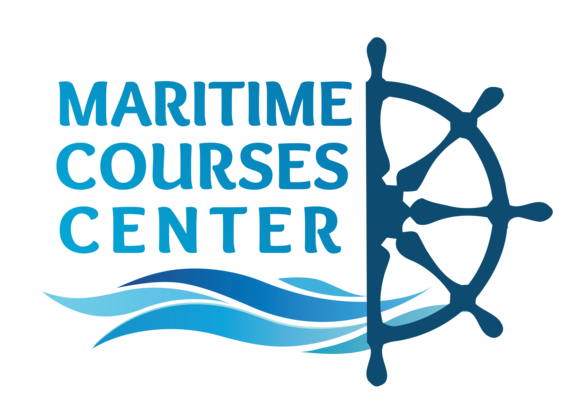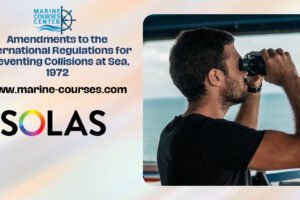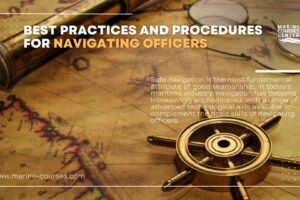
“International Regulations for Preventing Collisions at Sea (COLREG): A Comprehensive Guide”
- Posted by MCC
- Date 27/01/2023
- Comments 4 comments

“International Regulations for Preventing Collisions at Sea (COLREGs): A Comprehensive Guide”
The International Regulations for Preventing Collisions at Sea (COLREGs) is divided into several sections, each containing specific rules related to different aspects of maritime navigation. The sections and their contents are as follows:
Part A: General Rules For International Regulations for Preventing Collisions at Sea (COLREGs)
Summery Of This Part
- Every vessel shall maintain a proper lookout at all times.
- Every vessel shall use all available means appropriate to the prevailing circumstances and conditions to determine if risk of collision exists.
- Every vessel shall proceed at a safe speed so as to be able to take proper and effective action to avoid collision and be stopped within a distance appropriate to the prevailing circumstances and conditions.
- Every vessel shall have the ability to maneuver as required by the prevailing circumstances and conditions.
- Every vessel shall carry the necessary lights and shapes as required by the COLREGs.
- Every vessel shall comply with the International Rules for the Prevention of Collision at Sea (COLREGs).
- Every vessel shall avoid impeding the safe passage of other vessels.
- Every vessel shall give way to other vessels in accordance with the COLREGs.
Part B: Steering and Sailing Rules For International Regulations for Preventing Collisions at Sea (COLREGs)
PART B – Section I Conduct of Vessels in any Condition of Visibility
Rule 4 – Application
Rule 5 – Look-out
Rule 6 – Safe Speed
Rule 7 – Risk of Collision
Rule 8 – Action to Avoid Collision
Rule 9 – Narrow Channels
Rule 10 – Traffic Separation Schemes
PART B – Section II Conduct of Vessels in Sight of One Another
Rule 11 – Application
Rule 12 – Sailing Vessels
Rule 13 – Overtaking
Rule 14 – Head-on Situation
Rule 15 – Crossing Situation
Rule 16 – Action by Give-way Vessel
Rule 17 – Action by Stand-on Vessel
Rule 18 – Responsibilities Between Vessels
PART B – Section III Conduct of Vessels in Restricted Visibility
Rule 19 – Conduct of Vessels in Restricted Visibility
Summery Of This Part
- Every vessel shall at all times maintain a proper lookout by sight and hearing as well as by all available means appropriate in the prevailing circumstances and conditions.
- Every vessel shall at all times proceed at a safe speed so that she can take proper and effective action to avoid collision and be stopped within a safe distance.
- Every vessel shall at all times maneuver as necessary to avoid collision.
- Every vessel shall, if the circumstances of the case admit, avoid impeding the safe passage of other vessels.
- Every vessel shall, when required by the circumstances of the case, give way to other vessels.
- Every vessel shall, when taking action to avoid collision, have regard to the action which may be required by the rules of this part.
- Every vessel shall, when in a traffic separation scheme, comply with the rules of this part and with the scheme.
Part C: Lights and Shapes For International Regulations for Preventing Collisions at Sea (COLREGs)
Rule 20 – Application
Rule 21 – Definitions
Rule 22 – Visibility of Lights
Rule 23 – Power-driven Vessels Underway
Rule 24 – Towing and Pushing
Rule 25 – Sailing Vessels Underway and Vessels Under Oars
Rule 26 – Fishing Vessels
Rule 27 – Vessels Not Under Command or Restricted in their Ability to Manoeuvre
Rule 28 – Vessels Constrained by their Draught
Rule 29 – Pilot Vessels
Rule 30 – Anchored Vessels and Vessels Aground
Rule 31 – Seaplanes
Summery Of This Part
- Every vessel shall carry the lights and shapes as prescribed in the COLREGs.
- Every vessel shall exhibit the lights and shapes required by the COLREGs in sufficient time to avoid a collision, and in any condition of visibility.
- Every vessel shall, if the nature of the vessel or the circumstances of the case admit, exhibit the lights and shapes required by the COLREGs in sufficient time to avoid a collision.
Part D: Sound and Light Signals For International Regulations for Preventing Collisions at Sea (COLREGs)
Rule 32 – Definitions
Rule 33 – Equipment for Sound Signals
Rule 34 – Manoeuvring and Warning Signals
Rule 35 – Sound Signals in Restricted Visibility
Rule 36 – Signals to Attract Attention
Rule 37 – Distress Signals
PART E – Exemptions
Rule 38 – Exemptions
Summery Of This Part
- Every vessel shall, in a manner appropriate to the prevailing circumstances and conditions, use the sound signals prescribed in the COLREGs, to indicate her intentions or to give warning of her presence.
- Every vessel shall, in a manner appropriate to the prevailing circumstances and conditions, use the light signals prescribed in the COLREGs, to indicate her intentions or to give warning of her presence.
Note that the above-mentioned rules are the summary of the contents of COLREGs, for more detailed information and in-depth understanding, you may refer to the
Tag:COLREG
You may also like
Leave A Reply Cancel reply
You must be logged in to post a comment.




4 Comments